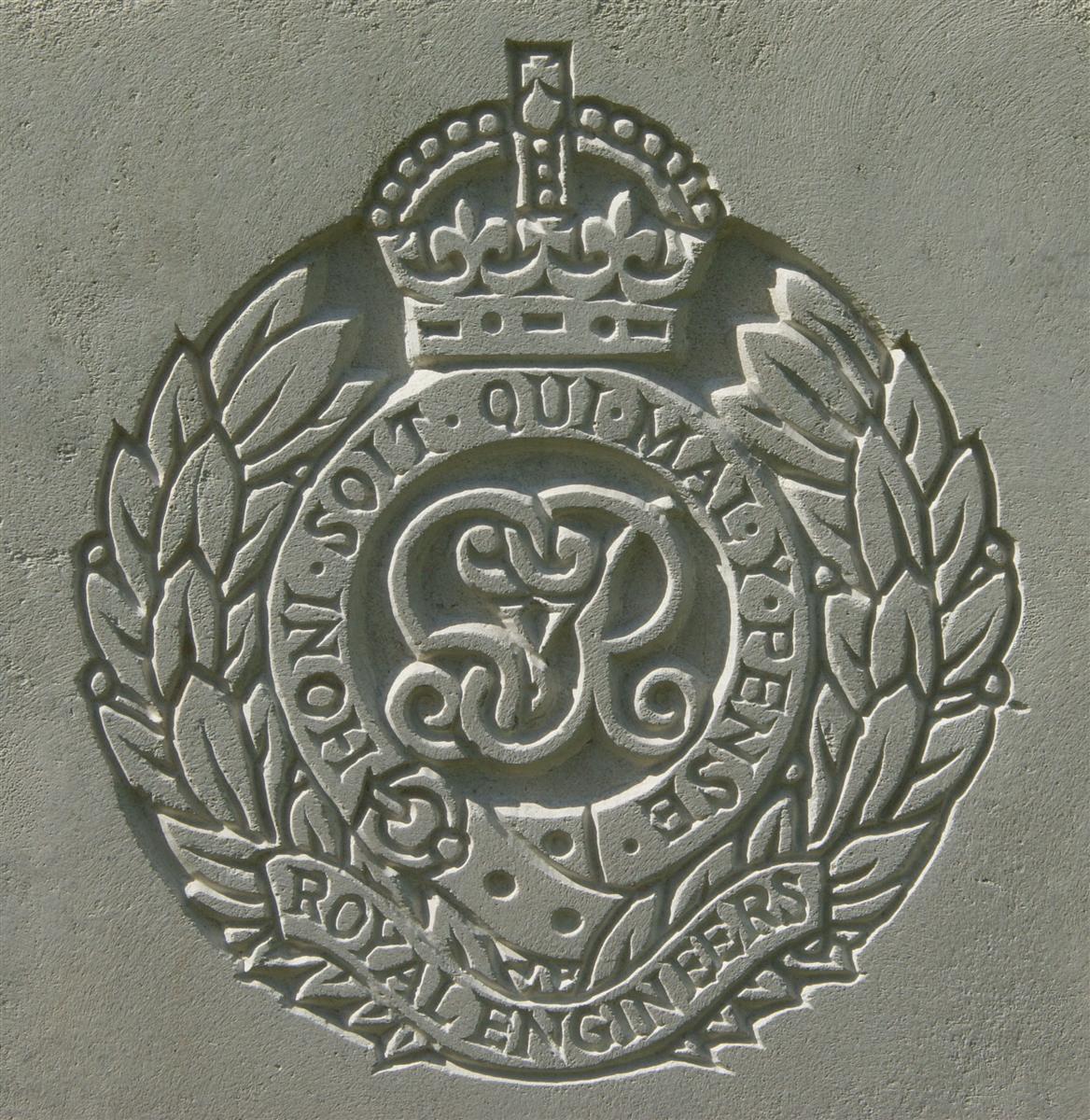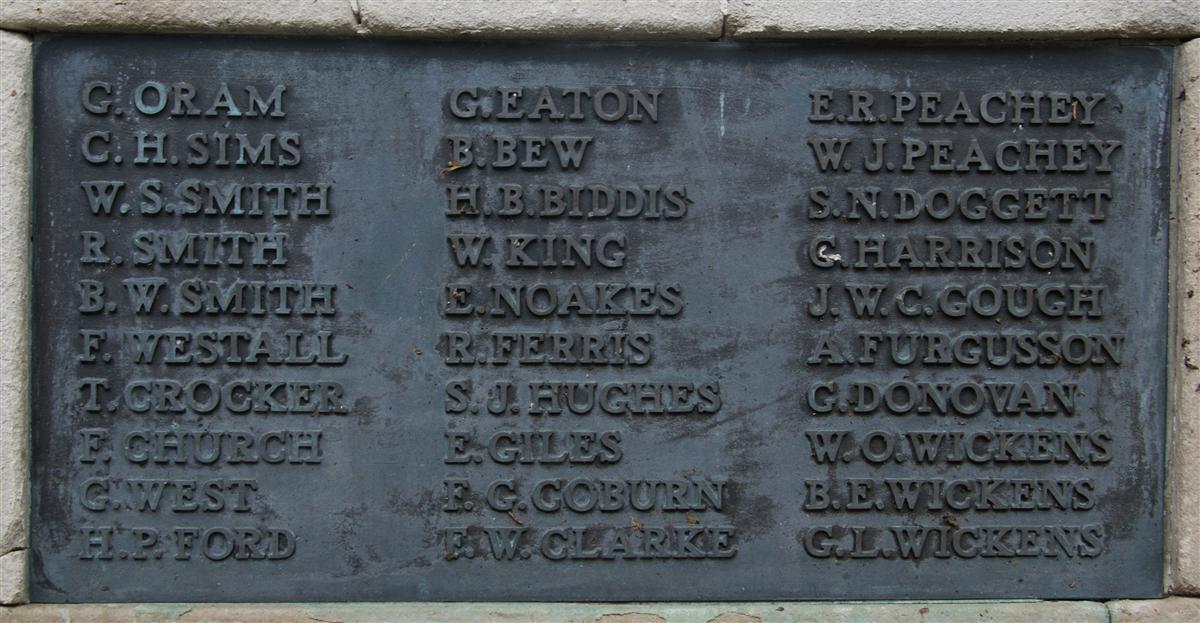Richard Smith
Sapper 32935 Richard Smith, 106th Field Company, Royal Engineers
Richard was born in 1890, the son of Sidney and Kate (née Weller) Smith; they had four children: Edith Rachel (born 1884), William Sidney (1887), Richard (1890) and Benjamin Weller (1892). The family home was at 4 Church View Villas, this became 17 Blenheim Road when street numbering was introduced in the 1920s. It was at the northern end of a terrace of four small cottages and was demolished to allow for the road around the corner it occupied to be widened and a pavement put in. The remainder of the terrace (11, 13 & 15 Blenheim Road) is still standing.

'Church View Villas' today - minus No 4. |
In 1912 Richard married Bertha Wheeler, very soon after which their daughter, Gladys, arrived.
He enlisted in early 1915, joining the Royal Engineers, who had plenty of use for skilled craftsmen – though battlefield carpentry was probably not quite to the same standard as a furniture makers like Elliott’s. After training he was posted to the 106th Field Company, Royal Engineers who were Divisional troops with the 25th Division in 4th Army.

Royal Engineers at work. |
The account of the 25th Division on the Long Long Trail website states: The first quarter of 1917 was spent in the Ploegsteert sector: a relatively quiet time punctuated by frequent raids and minor operations.
On 17 February men from two battalions of 7th Brigade, the 1st Wiltshire and 10th Cheshire Regiments were tasked with carrying out a trench raid. Part of the plan was to destroy enemy dugouts, to which end a detachment of 14 Engineers from the 106th Company (including Richard) were detailed to place the explosive charges needed to inflict any significant damage on the well constructed concrete bunkers.

The regimental badge of the Royal Engineers, as used on CWGC headstones. |
Officially it was a quiet day for the Company:
War Diary – 106 Company, Royal Engineers, 17 February 1917.
Rest and bath day for Coy. Raid took place at 10.30am. The 14 sappers accompanied the 1st Wilts & 10th Cheshires. Several dugouts blown up. Casualties: 1 killed, 5 missing, 1 wounded.
Seven casualties is not a large number for a unit involved in a trench raid, but, as only fourteen Engineers were involved, this was actually a very high casualty rate of 50%.
Richard was probably the ‘1 killed’, though he may have been one of the ‘5 missing’. Either way his body was recovered from the battlefield and he was buried in grave I. O. 4 in the Berks Cemetery Extension at Ploegsteert. This cemetery was started the previous year when the 1/4th Battalion of the Berkshire Regiment were spending their first spell in the line.
Richard’s parents put an announcement in the local paper:
Newbury Weekly News, 1 March 1917 – Killed in Action
SMITH – In France, Sapper Richard Smith 32,935, Royal Engineers, second son of Sydney and Kate Smith, of 4, Church View, West Fields, Newbury, aged 27.
This was expanded upon in the regular weekly column covering the local men serving their country:
Newbury Weekly News, 1 March 1917 – Local War Notes
It is officially reported that Sapper Richard Smith, of the Royal Engineers, was killed by a shot through the head whilst returning from a raid. He was the second son of Mr and Mrs Sydney Smith, of 4, Church-view, West Fields. He was 27 years of age, and a Cowslade boy, and a member of the Parish Church choir. Apprenticed at Elliott’s Joinery Works, he joined up two years ago, and had been in France eighteen months, having been home on leave a month previous to his death. He had been wounded twice before. A wife and child are left to mourn their loss.
His wife placed her own announcement the following week:

Richard's name on Newbury War Memorial, between those of his brothers. (left) |
Newbury Weekly News, 8 March 1917 – In Memoriam
In loving memory of my dear husband, Richard Smith, who was killed in action on February 17th, 1917.
A light is from our household gone,
A voice we loved is stilled;
A place is vacant in our home
Which never can be filled.
From his loving Wife and little Gladys.
Locally he is remembered on Tablet 11 of the Newbury Town War Memorial and the parish memorial board and roll of honour in St Nicolas Church, Newbury.
Richard was the first of Sidney and Kate’s sons to die in this terrible war; next was Benjamin a few months later while serving in France with the Labour Corps; finally William fell, a victim of the German Spring Offensive in March 1918. Sidney and Kate had lost all three of their sons, none of whom was serving in the infantry or other very high risk role. Luck was most certainly not with them – as was most painfully made clear by the manner of Benjamin’s death – struck by lightning!

